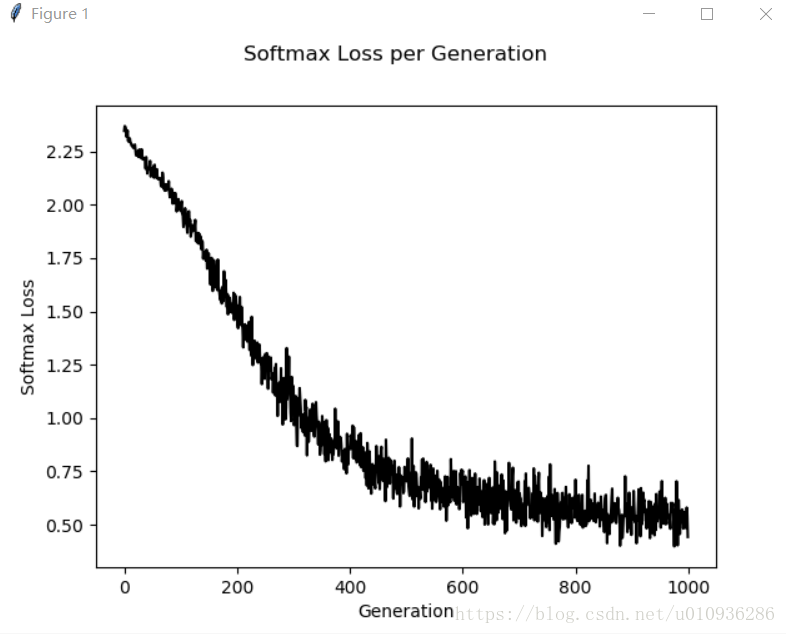Tensorflow实现AlexNet卷积神经网络及运算时间评测
本文实例为大家分享了Tensorflow实现AlexNet卷积神经网络的具体实现代码,供大家参考,具体内容如下
之前已经介绍过了AlexNet的网络构建了,这次主要不是为了训练数据,而是为了对每个batch的前馈(Forward)和反馈(backward)的平均耗时进行计算。在设计网络的过程中,分类的结果很重要,但是运算速率也相当重要。尤其是在跟踪(Tracking)的任务中,如果使用的网络太深,那么也会导致实时性不好。
from datetime import datetime
import math
import time
import tensorflow as tf
batch_size = 32
num_batches = 100
def print_activations(t):
print(t.op.name, '', t.get_shape().as_list())
def inference(images):
parameters = []
with tf.name_scope('conv1') as scope:
kernel = tf.Variable(tf.truncated_normal([11, 11, 3, 64], dtype = tf.float32, stddev = 1e-1), name = 'weights')
conv = tf.nn.conv2d(images, kernel, [1, 4, 4, 1], padding = 'SAME')
biases = tf.Variable(tf.constant(0.0, shape = [64], dtype = tf.float32), trainable = True, name = 'biases')
bias = tf.nn.bias_add(conv, biases)
conv1 = tf.nn.relu(bias, name = scope)
print_activations(conv1)
parameters += [kernel, biases]
lrn1 = tf.nn.lrn(conv1, 4, bias = 1.0, alpha = 0.001 / 9, beta = 0.75, name = 'lrn1')
pool1 = tf.nn.max_pool(lrn1, ksize = [1, 3, 3, 1], strides = [1, 2, 2, 1], padding = 'VALID', name = 'pool1')
print_activations(pool1)
with tf.name_scope('conv2') as scope:
kernel = tf.Variable(tf.truncated_normal([5, 5, 64, 192], dtype = tf.float32, stddev = 1e-1), name = 'weights')
conv = tf.nn.conv2d(pool1, kernel, [1, 1, 1, 1], padding = 'SAME')
biases = tf.Variable(tf.constant(0.0, shape = [192], dtype = tf.float32), trainable = True, name = 'biases')
bias = tf.nn.bias_add(conv, biases)
conv2 = tf.nn.relu(bias, name = scope)
parameters += [kernel, biases]
print_activations(conv2)
lrn2 = tf.nn.lrn(conv2, 4, bias = 1.0, alpha = 0.001 / 9, beta = 0.75, name = 'lrn2')
pool2 = tf.nn.max_pool(lrn2, ksize = [1, 3, 3, 1], strides = [1, 2, 2, 1], padding = 'VALID', name = 'pool2')
print_activations(pool2)
with tf.name_scope('conv3') as scope:
kernel = tf.Variable(tf.truncated_normal([3, 3, 192, 384], dtype = tf.float32, stddev = 1e-1), name = 'weights')
conv = tf.nn.conv2d(pool2, kernel, [1, 1, 1, 1], padding = 'SAME')
biases = tf.Variable(tf.constant(0.0, shape = [384], dtype = tf.float32), trainable = True, name = 'biases')
bias = tf.nn.bias_add(conv, biases)
conv3 = tf.nn.relu(bias, name = scope)
parameters += [kernel, biases]
print_activations(conv3)
with tf.name_scope('conv4') as scope:
kernel = tf.Variable(tf.truncated_normal([3, 3, 384, 256], dtype = tf.float32, stddev = 1e-1), name = 'weights')
conv = tf.nn.conv2d(conv3, kernel, [1, 1, 1, 1], padding = 'SAME')
biases = tf.Variable(tf.constant(0.0, shape = [256], dtype = tf.float32), trainable = True, name = 'biases')
bias = tf.nn.bias_add(conv, biases)
conv4 = tf.nn.relu(bias, name = scope)
parameters += [kernel, biases]
print_activations(conv4)
with tf.name_scope('conv5') as scope:
kernel = tf.Variable(tf.truncated_normal([3, 3, 256, 256], dtype = tf.float32, stddev = 1e-1), name = 'weights')
conv = tf.nn.conv2d(conv4, kernel, [1, 1, 1, 1], padding = 'SAME')
biases = tf.Variable(tf.constant(0.0, shape = [256], dtype = tf.float32), trainable = True, name = 'biases')
bias = tf.nn.bias_add(conv, biases)
conv5 = tf.nn.relu(bias, name = scope)
parameters += [kernel, biases]
print_activations(conv5)
pool5 = tf.nn.max_pool(conv5, ksize = [1, 3, 3, 1], strides = [1, 2, 2, 1], padding = 'VALID', name = 'pool5')
print_activations(pool5)
return pool5, parameters
def time_tensorflow_run(session, target, info_string):
num_steps_burn_in = 10
total_duration = 0.0
total_duration_squared = 0.0
for i in range(num_batches + num_steps_burn_in):
start_time = time.time()
_ = session.run(target)
duration = time.time() - start_time
if i >= num_steps_burn_in:
if not i % 10:
print('%s: step %d, duration = %.3f' %(datetime.now(), i - num_steps_burn_in, duration))
total_duration += duration
total_duration_squared += duration * duration
mn = total_duration / num_batches
vr = total_duration_squared / num_batches - mn * mn
sd = math.sqrt(vr)
print('%s: %s across %d steps, %.3f +/- %.3f sec / batch' %(datetime.now(), info_string, num_batches, mn, sd))
def run_benchmark():
with tf.Graph().as_default():
image_size = 224
images = tf.Variable(tf.random_normal([batch_size, image_size, image_size, 3], dtype = tf.float32, stddev = 1e-1))
pool5, parameters = inference(images)
init = tf.global_variables_initializer()
sess = tf.Session()
sess.run(init)
time_tensorflow_run(sess, pool5, "Forward")
objective = tf.nn.l2_loss(pool5)
grad = tf.gradients(objective, parameters)
time_tensorflow_run(sess, grad, "Forward-backward")
run_benchmark()
这里的代码都是之前讲过的,只是加了一个计算时间和现实网络的卷积核的函数,应该很容易就看懂了,就不多赘述了。我在GTX TITAN X上前馈大概需要0.024s, 反馈大概需要0.079s。哈哈,自己动手试一试哦。
以上就是本文的全部内容,希望对大家的学习有所帮助,也希望大家多多支持【听图阁-专注于Python设计】。
